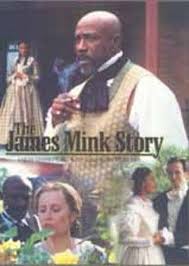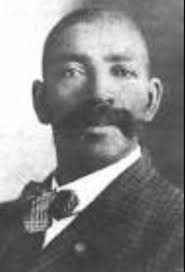Toronto through its 187-year history has always been a city of equal opportunity where ambitious men and women can work hard to make, or easily lose, their amassed fortunes.
And it is not surprising that one of Toronto’s first Black millionaire was born the son of a freed U.S. slave before heading to our city to seek his fame and fortune more than 160-years-ago.
James Mink, in photo at right, worked hard and was earning lots of money in Toronto in the 1840s and 50s’, during a time when slavery was rampant in the U.S.
Mink was born in the U.S. in 1811 and was the youngest of 11 children of a slave known as “Mink.” His father and mother were owned by United Empire Loyalist Johan Herkimer.
Mink, who was smart and had business savvy, fled to Toronto which was then a busy and bustling city with many opportunities for Blacks. The city was incorporated in 1834.
He and his brother George started hotels, liveries and coach services, first in Kingston, Ont., and then in Toronto after Mink moved here.
The brothers knew how to drive a wagon and transported travellers between Toronto and Kingston, then the capital city of Upper Canada. They drove passengers to a halfway point in Brighton, where they exchanged passengers, procured fresh horses and returned with the passengers.
Their business prospered and soon James was a self-made millionaire, a distinction held by very few Blacks during those days when they could barely obtain a job.
In time the siblings had gained the respect of their fellow Canadians and were assigned much-desired mail delivery runs with Canada Post. George would take the mail from Kingston to Montreal, while James took the mail to Kingston and other towns surrounding Toronto.
As their prominence grew, James’ hotel was used as a voting station during the Toronto elections. The mayor even hired his coach service for his inauguration in the 1850s and farmers would stay at his hotel when they came to town to sell their produce at St. Lawrence Market.
By that time many Toronto residents were using their livery service, including high-profile citizens as the city Sheriff.
The brothers were even given credit for starting the first public transit systems in their cities. In Toronto, travellers were taken from the Town of Yorkville to the market by a Mink livery wagon.
A prosperous Mink went on to marry Elizabeth, who is described as “a white Irish immigrant.” It is reported that James gave a hefty $10,000 dowry to her family to obtain her hand.
U.S. businessman William Johnson married Mink’s daughter, Minnie, and took her on a honeymoon to the U.S., where it is reported, but hotly debated, that he apparently sold her into slavery to a Virginian tobacco plantation owner.
Mink, it is said, was stunned to learn of his daughter’s plight and went through a lot of red tape to get the British to buy her back on his behalf, which they did. Some researchers have concerns and question if Minnie was ever sold as a slave.
She did return to Toronto, where she mothered a son and lived on a Mink family farm on Don Rd. and Danforth Rds. area, according to Toronto census records from the 1860s.
The family enjoyed a fine life for many years, until one day an arsonist set fire to Mink’s livery and hotel and they lost everything since there were no insurance coverage then.
Eventually, trains began transporting people into the cities and George and James Mink’s business became redundant and eventually closed up.
Mink died in 1866 at the age of 55. He was living alone near today’s Windsor Arms Hotel in Toronto, at the time. The former millionaire was buried in Riverdale Cemetery.
His story was told in the loosely-based autobiographical 1996 made for TV movie Captive Heart: The James Mink Story, starring Lou Gossett, Jr. as James Mink and Kate Nelligan as his wife.
It is very sad for us today since large sections of Mink’s life has been undocumented, nor can records be found to retrace his once-richly exploits.


